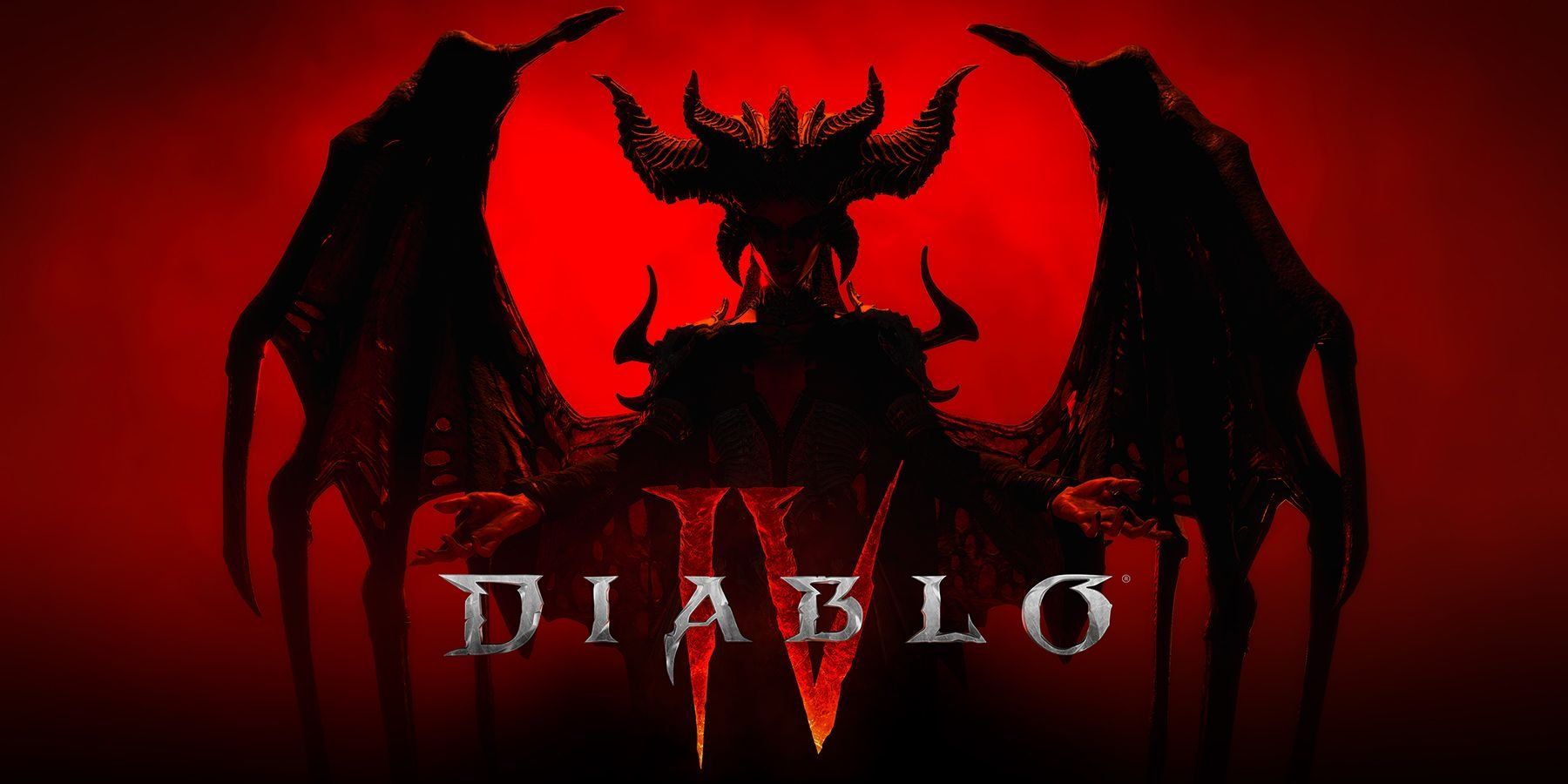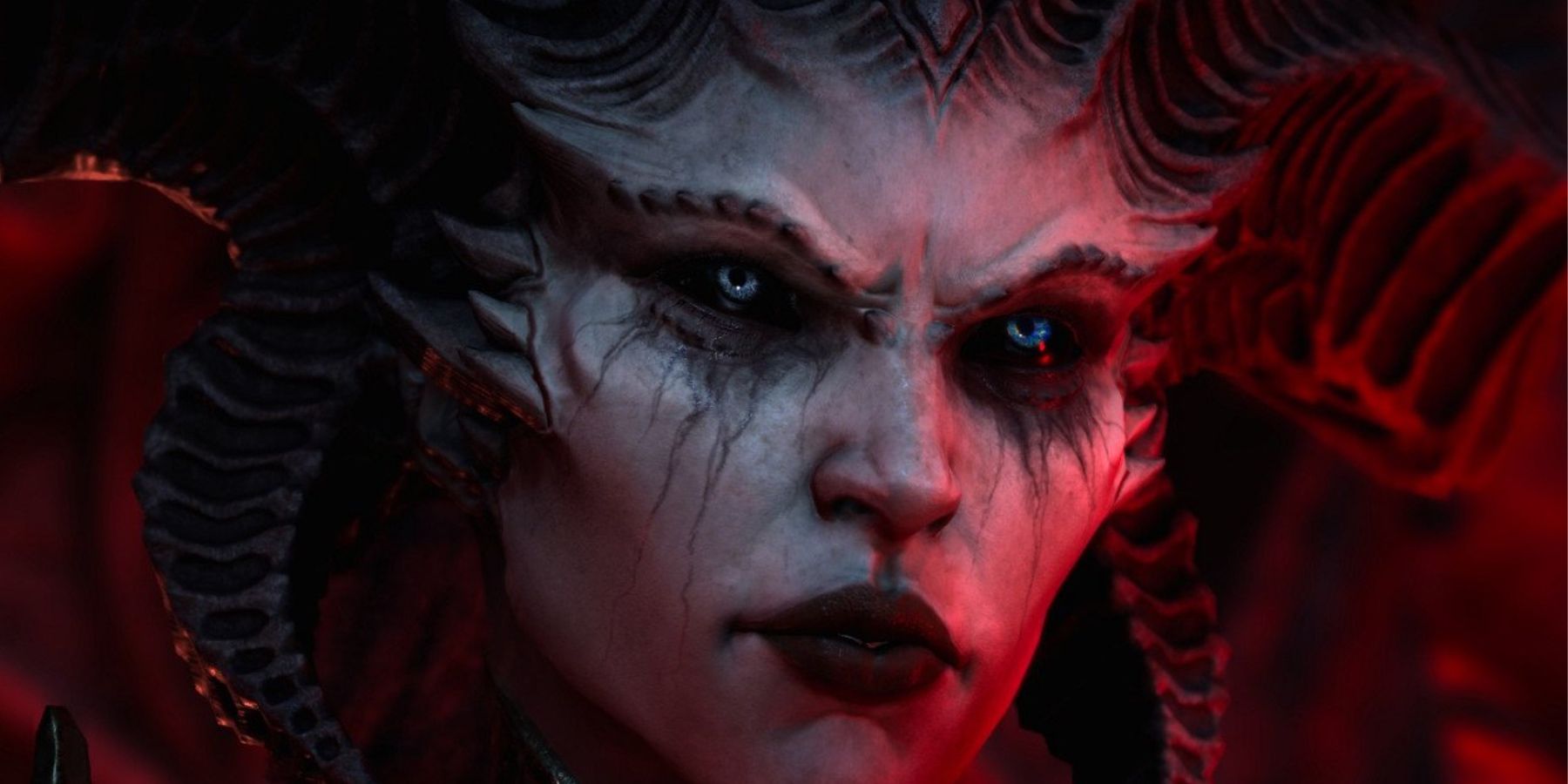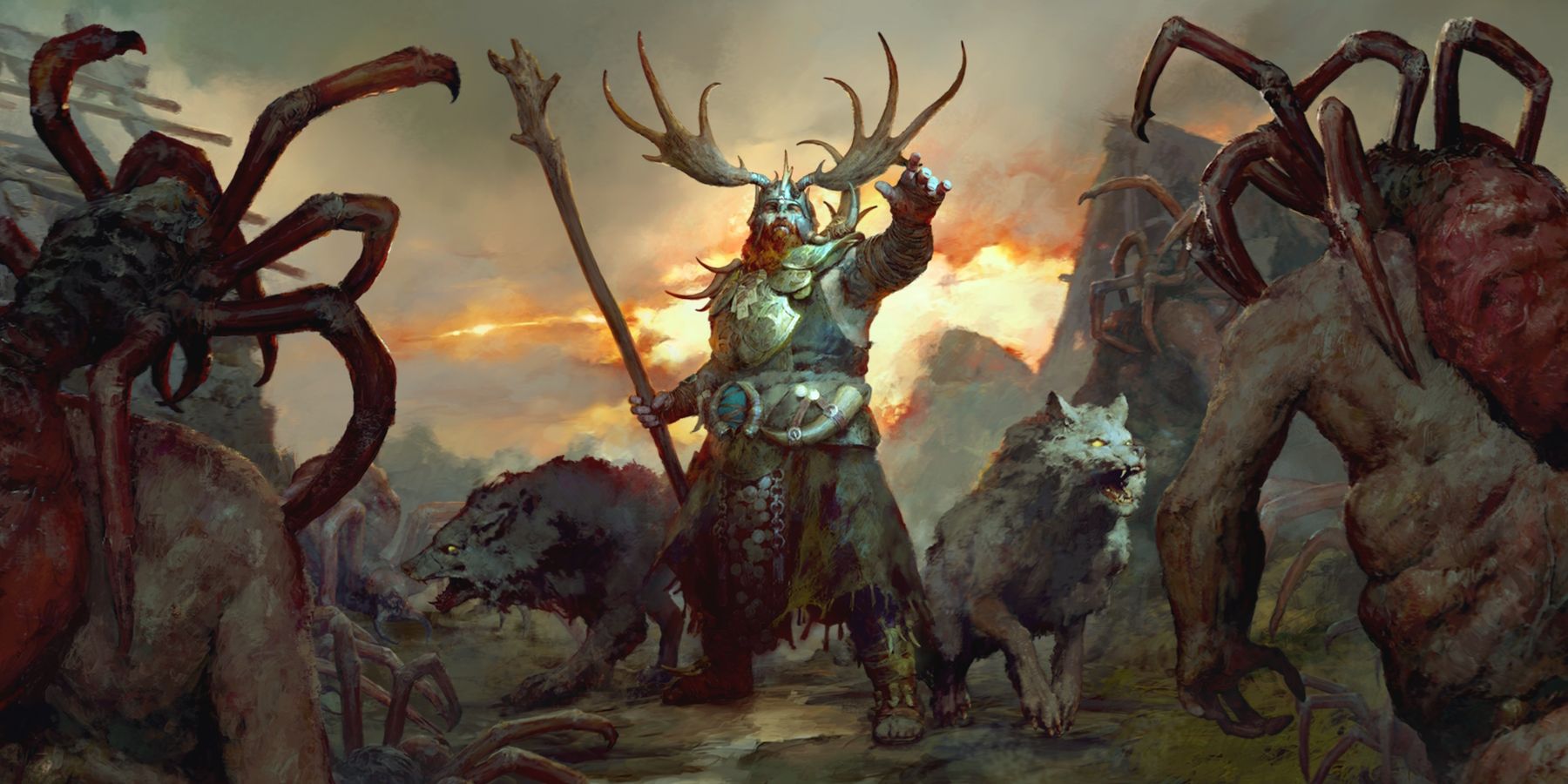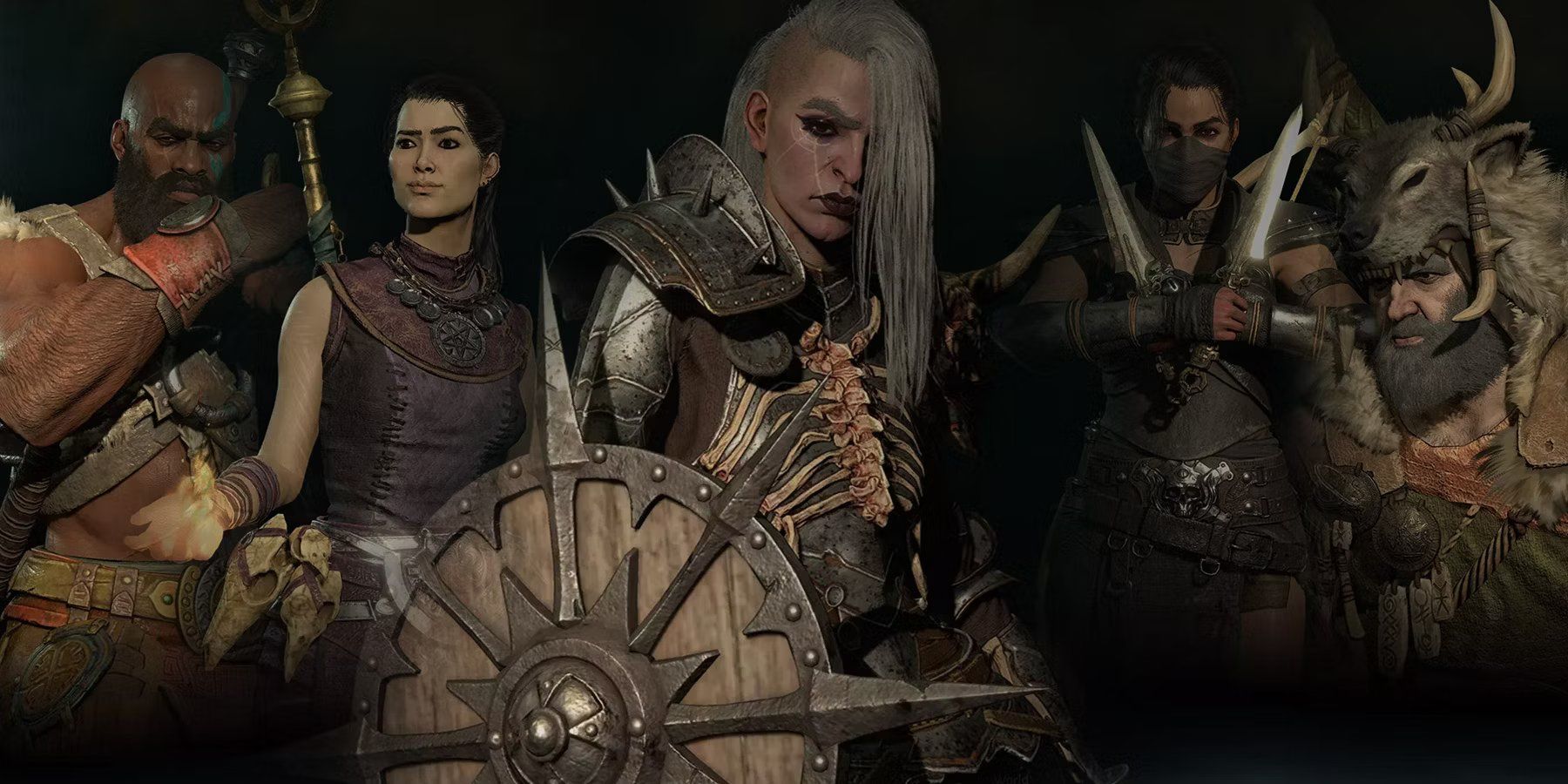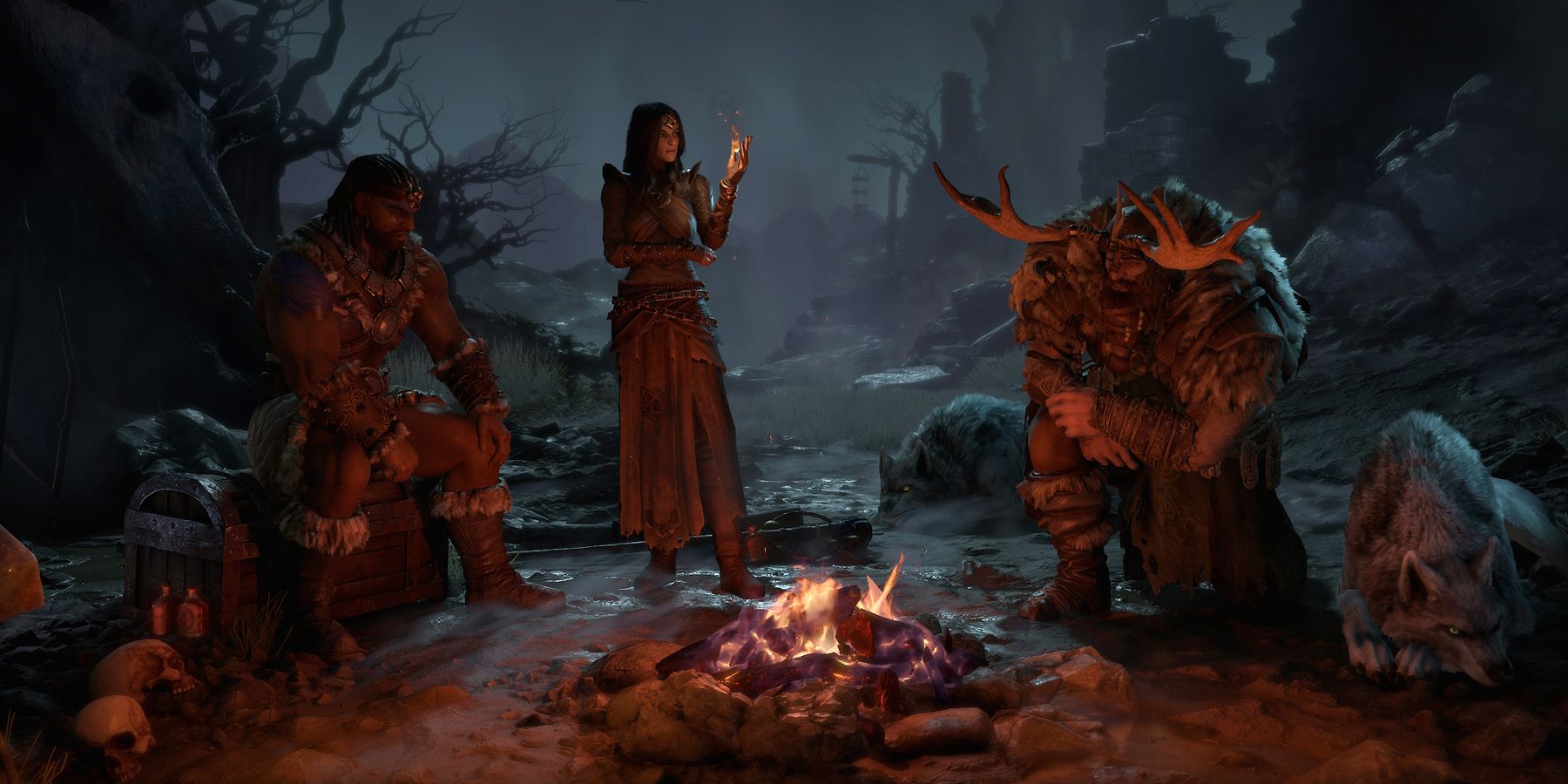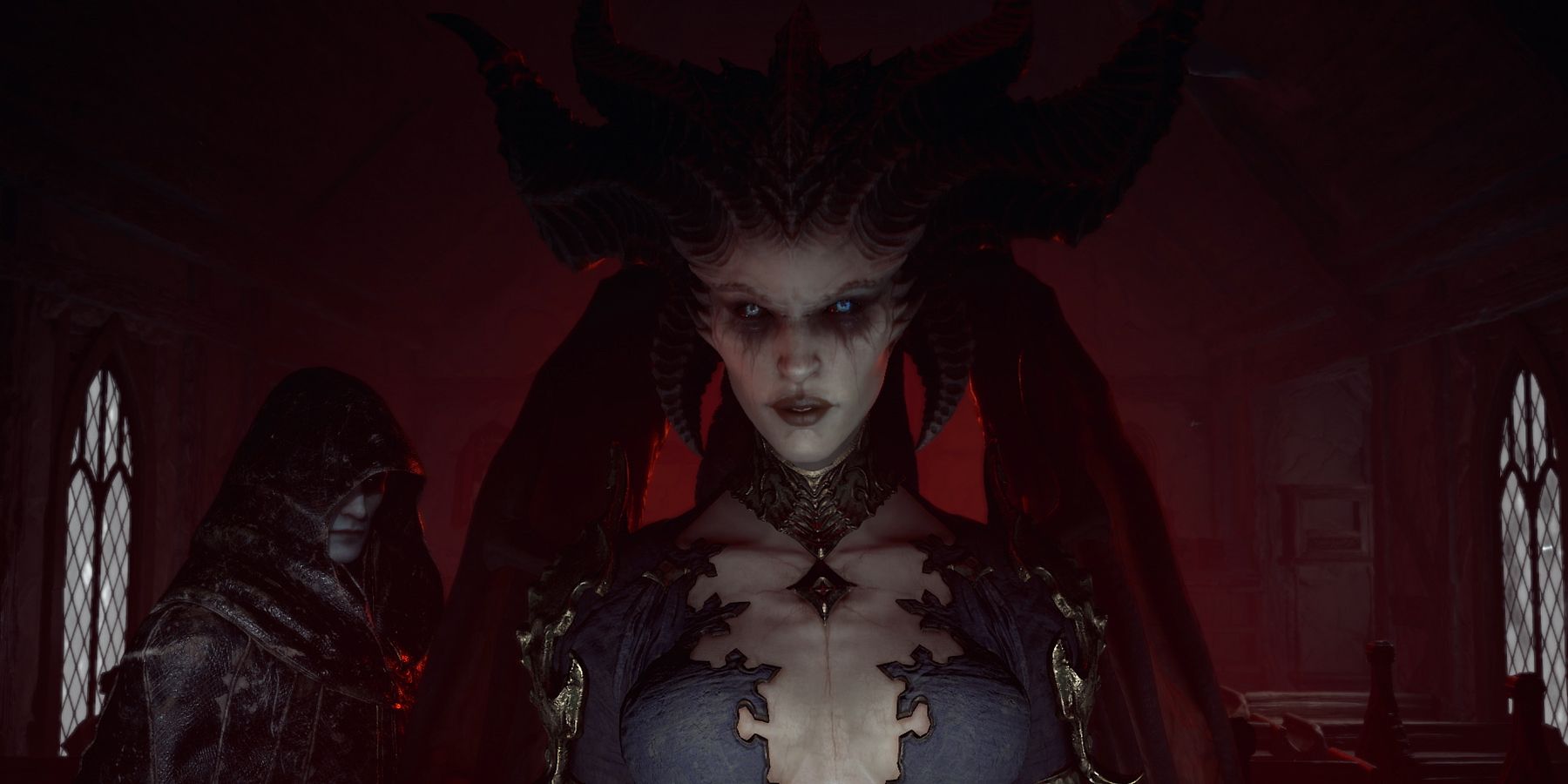It has been over 20 years since the battle between Heaven and Hell began, but the continuation of one of Blizzard’s most beloved gaming series is set to "officially" resume on June 6 with Diablo 4. Players will once again face off against powerful enemies from other realms in a dark, bloody, and deeply gothic world that captured the minds and attention of ARPG fans so many years ago, and with the countdown to Diablo 4's highly anticipated launch almost at an end, everyone is impatiently waiting to slay their way through Sanctuary once again.
Game Rant spoke with Diablo 4's Associate Game Director Joe Piepiora and Dungeons Producer Ash Sweetring Vickey about various aspects of its endgame, the paragon boards, and various design challenges. They went in-depth about Blizzard's desire to give players as much choice as they possibly can and avoid some of the issues they learned while making Diablo 3. The interview has been edited for brevity and clarity.
Q: Having played through more of Diablo 4, it is kind of unrelentingly brutal in its story elements. During the design phase, were there any discussions on if you were maybe going too dark?
Piepiora: When we sent out to create the world of Diablo 4, we knew we wanted to draw upon elements of previous games. We wanted to make sure we brought in the tense atmosphere of Diablo 1, that sense of isolation and claustrophobia. I wanted to bring in the build-making stuff from Diablo 2 that we thought would work for some class and (the way) its genre-defining. And then the action combat from Diablo 3. When we started thinking about the storytelling in Diablo 4, we wanted to start from: what is a story that we can tell, that we can use to introduce players who might have never played a Diablo game to the world of Diablo? That would allow us to focus on these returning characters brought more to the forefront, like Lilith, the daughter of Hatred and mother of Sanctuary, and Inarious, the father of Sanctuary.
When we started going through and thinking about what the story needed to feel like from the player's perspective, we did want to make sure the player is in the center of it as the wanderer, but we also wanted to make sure we were telling a story about the rise of Lillith, the effects of her return in the world, and the machinations surrounding those events that unfold. That is a dark tale. We do want to make sure that it is not a repressive, never-ending set of bleak circumstances for the player to engage with. When thinking about the world of Sanctuary, we wanted to make sure that it felt like a world worth saving, and that there was beauty in this place as well. That is also true in our story elements.
Q: Where there anything specific you knew you didn’t want to take from Diablo 3 going into Diablo 4?
Piepiora: One thing we thought about from Diablo 3 was the nature of rifts and greater rifts.
Vickey: I was going to call out the same thing. The rifts were one of the biggest things that I think we wanted to take away. We heard a lot of feedback from players that it seemed pretty tedious after a while, so we wanted to introduce the objective of Nightmare Dungeons which is actually the ability to be able to increase your personal player power and cater more towards your personal play style. With the use of affixes and sigils, the player is able to go into a dungeon that they may or may not have gone through before and turn it into a nightmare version of that dungeon for more powerful loot. You’ll be able to work in conjunction with the in-town occultist to imbue your powers. We find that that was one of the big things that we were able to take away is how we can improve an everyday quality of life item that people still enjoyed, but something that we could make better for the long run for players.
Piepiora: One other aspect I think worth calling out, was the idea of the paragon board. When we think back to the Diablo 3 paragon system, we made a pretty big change in our approach. We wanted to focus more on the idea of capped progression, and not this sense of never-ending power progression. We wanted to put more emphasis on the choices the player has made over the course of their character's progression and what they got for drops, versus the amount of time they’ve invested purely in that character.
That was another really big change that we made in that we wanted to provide a lot of extra choices once players got to that point and customization options. We didn’t want it to be never-ending, and we wanted there to be a finite point where gear doesn’t get more powerful numerically from here. Now it's really about finding the right affixes on the items you’re looking for, the exact legendary powers you need, or the unique items that you’re hunting for. That was really more of the focus for us.
Q: Do you think the Paragon boards are going to help you move away from meta builds and allow players to choose from a much greater set of options?
Piepiora: The paragon feature is definitely designed to allow for a lot more player expression through the way that they play. And it’s introduced at a point and time we expect players, once they reach level 50, they learned a lot of the basic ideas of how their class is intended to play. Once they reach the paragon board, we expect it to help. It’s important to us philosophically, that if Diablo 4 is a game about choice, which we have tried to have manifest through many parts of the game, we don’t undermine that pillar of ours by having it balanced to suggest you should play one type of sorceress. Like if you’re not playing a cold sorceress, you’re not meta for example.
Now even across seasons in Diablo 3, there were builds that would crop up and be a little more powerful in a season for a few seasons in a row. What we’re trying to do now is make sure if we find that a version of the cold sorceress is overly performing relative to other parts of the sorceress, that we don’t squash player creativity by allowing that to persist for too long. The reality is that Diablo 4 is a game with a lot of combinatorics, there are lots of things all combined to make interesting effects, and we love that about Diablo 4. It does make it not as easy to simply suggest that everything is going to be at 100% parity across the board. We want to make sure that decisions are interesting for players to make, and that as we go through the game experience we’ll be continually rebalancing and tweaking things to make sure things feel like they’re in line with each other. That’s going to be our emphasis moving forward.
Vickey: There is also just the general fun factor. Just being able to play each of the classes and realize this is a fun class to play. I understand having the love for the character and maybe it not being in the position of it being strong at the time, and you want some more catering to that character. We’re certainly taking those things into consideration, and we’ll be taking that approach with all our classes moving forward. The paragon in general is meant for a long-term solution, so we can have our players focusing on long-term skill gaining.
Piepiora: You’ve also seen us over the course of the different betas make a number of balance tweaks after feedback and the data we get from players, so we are committed to this process in the long term making sure things feel great to play on the regular.
Q: Did you worry at all about decision paralysis when designing the paragon boards?
Piepiora: Absolutely. The way we began to approach this early was beginning with the starter board that would help players understand how the nodes work and how to spend points towards your glyph socket, for example. But when you get to that first board selection moment, that’s the big one. Of the eight boards, you have options to select as you’re playing through the experience at launch. Every one of the boards has a legendary power node on it.
When you’re looking through the various boards, you can see all the rare nodes on it, you can preview the boards from various directions. So players looking for a sense of what is going on, the legendary nodes serve as a really, really good identifier for that board. If I’m playing as a lightning sorceress, there are a couple of lightning-themed boards to choose from. I’m probably not going to look at the cold-themed ones, even though there are things on there I could use, particularly in the rare nodes. But I don’t need to look at those first as I’m probably going to look at the lightning ones first.
So that reduces the number of choices a little bit because you’ve already made a lot of decisions for your character, and you have an idea of what you are sort of trying to build at that point. That helps cut the choice down from eight to about two for your first board selection. At that point, it’s a matter of if the player wants to rotate the board and figure out the right way to go, that’s great! Even if it’s just figuring out the quickest way to the legendary node, that can still be very impactful for them too. These are really powerful and exciting nodes that are easy to understand in relation to your build, and everything else in there is really powerful too, but you might not necessarily want to dig that deep when you get to that board initially. Other players are going to love all of that right away. So that’s why the legendary nodes exist that way, it’s a really good advertisement for the board as a whole. It’s like a door-buster offer during a Black Friday sale.
Q: After completing the story, was the decision to allow a player's other characters to jump immediately into the end-game instead of forcing them to go through the story again (and again and again) an early decision?
Piepiora: We knew early on that we wanted to make sure we provided some flexibility of choice for players. Looking back at Diablo 3 and our experience with its Adventure Mode for example, we knew there would be some players that wanted a few more options on how to level up a new character. So when we started thinking about Diablo 4, we wanted to make a really rich and exciting campaign, and the campaign is a bit longer than some of the campaigns we’ve done in the past story-wise. So in that world, we knew that having players go through and experience this once was really important for us, so players would have a really good idea of what the world is as well as the characters and the major parts of the story. But when players want to come back and play a second time, we did want to give them that flexibility so that if they wanted to skip that content and begin at level one with access to Whispers of the Dead, their mount, and a bunch of other stuff, we wanted to let them go ahead and go down that road for themselves.
So yeah, that was something we decided pretty early. It’s interesting to think about Diablo 4 and the way that we built it. Bringing the contiguous world of Sanctuary forward as a major part of the game and trying to fold these ideas into the more typically linear Diablo action-roleplaying game experience, we didn’t want to undermine what made Diablo an ARPG. But at the same time, we wanted to be able to embrace more exploration and more of these elements even as part of the regular experience. Going and finding Codex of Power entries for example, or completing various side dungeons it wouldn’t necessarily be fun to do that on your second character. Within seasons, we think it could be fun to redo those things, and when it comes to the campaign it’s the same idea.
We made some decisions, like with the Altars of Lillith, to provide an account-wide stat boost when you find an altar, because we thought it was really cool to go and find these things the first time you’re playing through the game. Like with any exploration game, it’s kinda fun to find these things the first time, but to be required to do that every time you make a new character, it could get rather tedious for players. So we’re trying to balance all these ideas. We often say 'a player doesn’t do what is fun, a player does what is optimal and most efficient'. It’s up to our design team to ensure what is efficient is fun. The same goes for the campaign, I think the campaign is super awesome, but not every player is going to want to go through and see that multiple times.
Q: It’s hard to have large elevation changes within dungeons, but was there any focus on using them early on, or did the advancements in tech allow you to design dungeons to take more advantage of them when they were available?
Vickey: That was something we certainly take into consideration from beginning to end, and it’s those little pieces that I think the dungeon designers and artists get really excited about and really help cement your immersion inside of the dungeon in general. We took a lot of early liberties to ensure that there are height differences and elevation differences so that they can be more in-depth with things like traversals and the more mobile classes that have their abilities to get around.
For example, if you’re playing a sorcerer or a rogue you can go quite a bit off of ledges onto other areas that you’re seeing, and so the mobility is totally there. It was something we paid a lot of attention to, and we wanted to really give it the attention that it deserves because, with our technology, we’re at a place where we can do that kind of stuff. We can create a story just by you passing by a particular cellar, or passing through a particular cave mine for example. We are able to depict that there was more once there or maybe there is more to be seen at a different height or terrain in the area.
Q: With some of the issues and dips in quality in-game releases this past year, was the art team or the design team challenged hard to get the game running smoothly with multiple players and all the clutter and enemies that can be found in Diablo 4?
Vickey: Performance and tech are always at the forefront of our minds. One of the things that, especially with the art and design side being put together, is the more you’re putting into the game, the more you’re testing the engine. Luckily our tools and engine are very sophisticated, and they can handle that sort of thing. But we’re always finding extremes and lows for that kind of stuff because we need to know where the happy medium is between them. We’ve landed on a very good place for launch in our dungeons and stuff, you’ll be able to see that in the performance, and no loading between scenes and such. But it took some time to get there, we definitely went through our tests and trials to ensure that we were getting to the right places, and there were a fair number of bugs along the way. I feel confident our teams did what we could with our due diligence to make it the best experience for our players.
Piepiora: One thing worth calling out on this is that Diablo 4 is going to be the first Diablo game we’ve actually released simultaneously to PC and consoles, and this is a big step for us. Naturally, we’ve taken Diablo 3, and we got it on the PlayStation 3, Xbox 360, Xbox One, PlayStation 4, and Nintendo Switch, and we learned an awful lot about what was necessary to make the best use of the hardware of those systems as a result of us going through this process several times with Diablo 3. The underlying engine that we used to deliver Diablo 4 has a lot of the same bones that we’ve used in the past with Diablo 3, and a lot of our engineers have worked on both games. So we have a lot of advantages in that regard in making the best use of the technology, and we have great partners in the various platforms we’re working with as well. We do take into account optimization performance from a very early point in time because we’ve already had to solve a lot of the problems in the past.
Q: Are you guys comfortable with where world bosses are currently, and are you worried at all about them becoming a main focus for those grinding the endgame?
Piepiora: The server slam was a very specific moment in time, asking players to reach level 20 and then fight Ashava at her lowest level of 25. That is a huge challenge for players, particularly in a beta environment with the available legendary drops in place. To be stuck grinding at level 20 hoping to get the very best items to go and fight Ashava made for a particularly challenging experience, which was the goal.
Looking forward to the actual launch experience, we believe that the world bosses are going to be a much more moderated experience for players to go in and engage with, more players around to go and fight against these creatures, and those other players will much more likely be of a higher level when you actually get into those world boss fights. In general, we’re feeling pretty good about things, but we’re always going to be evaluating the balance of these experiences. We get to pull a lot of good data from the servers as they’re live, so as players are defeating world bosses or dying to them, we get a lot of good data on those fights.
If things are off, we can make adjustments accordingly. We do want it to be a challenge, but not an insurmountable one. In terms of where this plays in the endgame grind, or endgame loop, for players once they’ve gotten into tiers three and four, the idea right now is that world bosses, in particular, have a lot of really good loot. But they only really drop the big loot about once a week. You can get little bits of loot every time the boss is up if you want to go fight them. Diablo 4 is not an MMO, but we want to create these opportunities for fun encounters for players to go engage with, but if the players are going to do what is optimal and not necessarily what is fun, if we tell them that world bosses are the way to get everything all the time, then that is the only thing players are going to do.
They might set their clocks to show up every three hours and do nothing but farm the world boss if we don’t moderate this. So we make sure you can show up once a week to get the loot from the boss as you’d like, and then go do the other content in the game. Go do nightmare dungeons, go do hell tide, go do legion events, or even just go do regular dungeons. So we feel pretty good about where the world bosses fall. They’re really, really fun content when you see that they’re available, so you can jump in, have a good time fighting that boss and move on to different activities afterward.
Q: Were there any specific struggles with making Sanctuary the main area of focus in the game?
Vickey: I wouldn’t say that we struggled with anything, but there were new challenges that we arose to. There are always different complications that we run into in game development, it’s a very tight magic making games out of thin air as everybody knows. There were a lot of challenges and a lot of ways we had to approach different decisions, like is this item one-handed or two-handed, or would Lillith like this way over Inarious? We don’t want to influence the play experience that way, we want to leave that experience to the player.
One of the most challenging things for us is ensuring that we are remaining inside our realm of the dark, gothic horror that we’re going to and not removing the player from that experience. Sometimes the story is sad... really, really sad, and we want you to feel those emotions. It was hard not to give too much leeway to our teams to remove the player from that experience, as we wanted to be able to provide them the experience of the story and understand where we’re taking them throughout the journey in these incredibly immersive, and kind of scary environments we’ve created for everybody.
Q: Any final thoughts?
Piepiora: The team is very excited about shipping Diablo 4, we’ve been working on the game for a long time. We know it’s a huge honor and responsibility to carry the flame forward for a series as venerated as Diablo. We’re going to be listening to feedback, as the launch is just the beginning. As a live service, we want to make sure we have a great dialogue with everybody as we move forward because that will make the game the best version of itself it can be.
Vickey: We’re going to get to play so soon, and I’m excited for people to play all the way through! Team Lillith!
Diablo 4 releases on June 6 for PC, PS4, PS5, Xbox One, and Xbox Series X/S.

